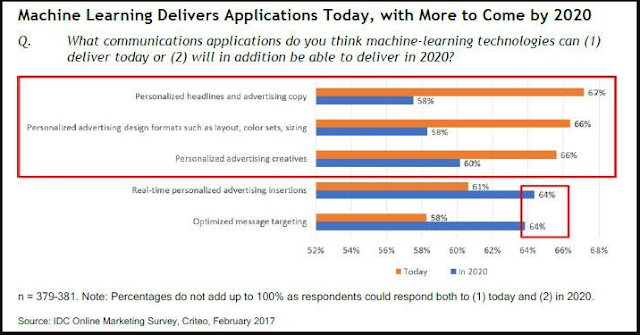Facebook in Crisis
Facebook, as a product, is in a moment of crisis. The
scandals and negative press that have besieged the company since the 2016
election show little signs of abating.
Further, there is healthy evidence to support the claim that young
American’s are less likely to use Facebook. A
recent Pew study reported that, in 2018, the percentage of teens who use
Facebook as their primary social media application is 10 percent, compared with
51 percent of teens who said Facebook was their primary social media application
in 2015. Further, in 2018 only 51 percent of teens report having a Facebook
account at all vs. 71 percent in 2015.
While the recent trends in teenage social media behavior
coupled with the negative stories surrounding user privacy and sentiment
manipulation might raise alarms for Facebook the reality is that the company,
both through its primary Facebook product and the brands it owns (Instagram and
WhatsApp), isn’t going anywhere. 68 percent of American adults still use
Facebook, and 75 percent of those users are daily users, according to that same
Pew
study. Further, Facebook remains the
social media app of choice across many emerging economies.
Facebook – Moment of
Truth
Despite Facebook’s seemingly unassailable position as one of
the world’s most dominate internet companies, the company does face a definitive
moment of reckoning. It’s position as an ultimate provider of news,
information, and general content makes the public and lawmakers nervous,
especially after it was proven that the company has the power to manipulate our
sentiment. Further, its
experimentation with pushing voter turnout and the company’s willingness to
sell its services to questionable partners, such as Cambridge Analytica, only
compounds concern. Facebook, at its core, is an attention harvesting and
selling company. Facebook’s inability, or unwillingness, to implement any type
of moral code around how they maximize that efficacy of both the harvesting and
the selling components of its business, has led to significant and almost
intractable problems for the company.
Facebook is a public company and has a fiduciary obligation
to maximize profits for its shareholders. Instituting strict moral standards
around attention harvesting and selling could dampen short-term profits. While
Facebook could argue this move as a long-term strategy to correct public
opinion and attract the next generation of users, there’s no guarantee its
shareholders or the market will react favorably. Further, no action from Facebook
could incite further public outcry, which in turn could jeopardize the
company’s economic health. The company has already experienced considerable
volatility in its stock price over the past year, while at the same time recording
record profits.
Volunteer for
Regulation
The inability to effectively manage the world’s content,
protect user privacy, and maintain impartiality while suppressing the spread of
fake information is both jeopardizing Facebook’s economic value and eroding
public trust in the company. Working with instead of against government when it
comes to building regulatory frameworks around these core issues would be a
shrewd move for Facebook.
Why would Facebook want to assume the responsibility of
managing the world’s content? A recent journalistic investigation into
the lives of Facebook’s content moderators paints a bleak picture illustrating
that the experience of these employees is more comparable to government drone
operators than to happy and thriving silicon valley employees. If Facebook had
the regulatory framework to manage content, it would not be responsible, for
example, for the propagation of Nazi sentiment or for catalyzing violence – it
would be in the position to point to conformity to regulation.
Facebook should also seek government partnership when
determining the future of user privacy. Facebook’s recent claims to pursue a “privacy
focused internet” by encrypting the messages of private user conversations
across its three main platforms, Instagram, Facebook, and WhatsApp, is merely a
Pyrrhic victory for privacy advocates. This is a ‘have-your-cake-and-eat-it-too’
moment, since the further integration of those three platforms will create an
abundance of new capabilities, and opportunities, to mine and sell macro data,
even if Facebook doesn’t monitor private conversations. If Facebook, and other
large data collecting technology companies, worked with the Federal Government
to get ahead of data privacy regulation and help establish the US version of
Europe’s GDPR, not only would it be a public relations victory but also
Facebook’s compliance cost would be dramatically reduced. Compare that with
Facebook’s experience in Europe, where it’s being investigated for
several GDPR related infractions.
Facebook’s selling of its customer data and targeting
services to unsavory clients, such as politically motivated interest groups,
also incites considerable backlash. Transparency is the key to ameliorating
this issue and Facebook has, since 2016, taken measurable steps to increase
visibility into where political advertisements originate, even after lobbying
against such rules prior to 2016. Currently, limited regulation exists in
the US for disclosing online political advertisements. Facebook should work
with regulators to construct transparency laws related to digital political
advertising or else face potentially less favorable regulation.
Across these instances, working with government has the
potential to be vastly beneficial to Facebook. If Facebook ‘got ahead’ of many
regulatory debates by partnering with lawmakers, it would enable the company to
have a voice in regulatory proceedings. This is more favorable than having to
ascribe to laws after they were written (thereby avoiding a potentially
exorbitant compliance price tag).
Further, from a public relations angle, Facebook would be void of responsibility
for spreading injudicious or unsavory content or influencing elections if it
was operating under new regulatory guidelines.


